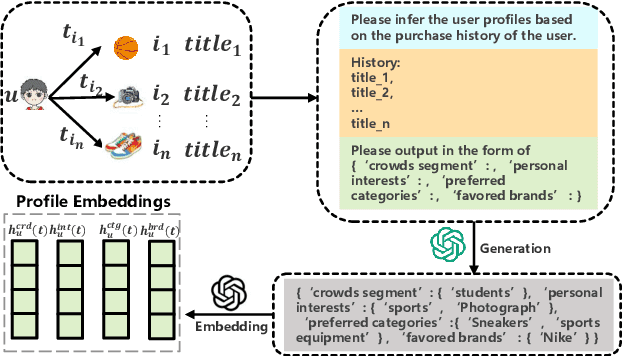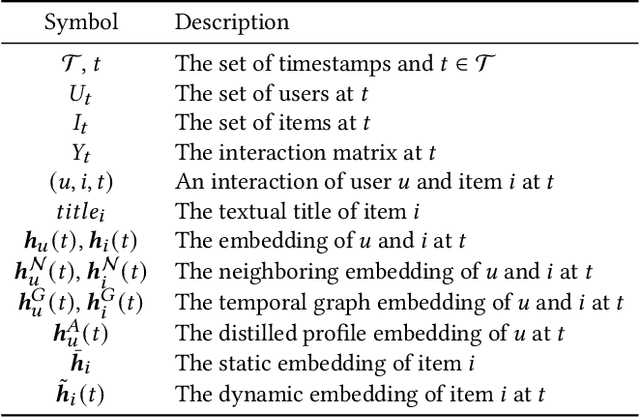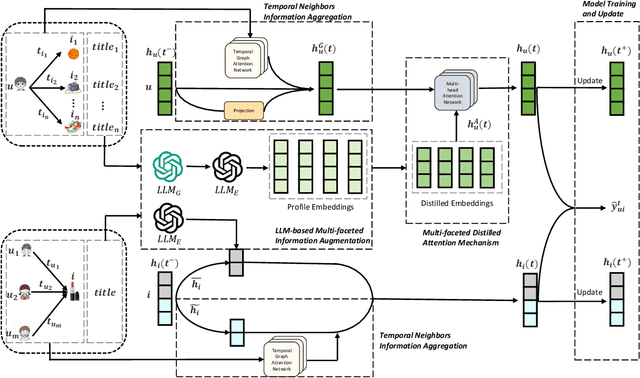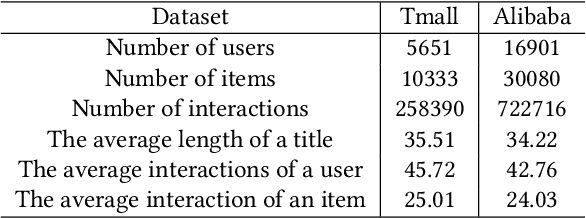Shitian Shen
When Box Meets Graph Neural Network in Tag-aware Recommendation
Jun 17, 2024



Abstract:Last year has witnessed the re-flourishment of tag-aware recommender systems supported by the LLM-enriched tags. Unfortunately, though large efforts have been made, current solutions may fail to describe the diversity and uncertainty inherent in user preferences with only tag-driven profiles. Recently, with the development of geometry-based techniques, e.g., box embedding, diversity of user preferences now could be fully modeled as the range within a box in high dimension space. However, defect still exists as these approaches are incapable of capturing high-order neighbor signals, i.e., semantic-rich multi-hop relations within the user-tag-item tripartite graph, which severely limits the effectiveness of user modeling. To deal with this challenge, in this paper, we propose a novel algorithm, called BoxGNN, to perform the message aggregation via combination of logical operations, thereby incorporating high-order signals. Specifically, we first embed users, items, and tags as hyper-boxes rather than simple points in the representation space, and define two logical operations to facilitate the subsequent process. Next, we perform the message aggregation mechanism via the combination of logical operations, to obtain the corresponding high-order box representations. Finally, we adopt a volume-based learning objective with Gumbel smoothing techniques to refine the representation of boxes. Extensive experiments on two publicly available datasets and one LLM-enhanced e-commerce dataset have validated the superiority of BoxGNN compared with various state-of-the-art baselines. The code is released online
DynLLM: When Large Language Models Meet Dynamic Graph Recommendation
May 13, 2024



Abstract:Last year has witnessed the considerable interest of Large Language Models (LLMs) for their potential applications in recommender systems, which may mitigate the persistent issue of data sparsity. Though large efforts have been made for user-item graph augmentation with better graph-based recommendation performance, they may fail to deal with the dynamic graph recommendation task, which involves both structural and temporal graph dynamics with inherent complexity in processing time-evolving data. To bridge this gap, in this paper, we propose a novel framework, called DynLLM, to deal with the dynamic graph recommendation task with LLMs. Specifically, DynLLM harnesses the power of LLMs to generate multi-faceted user profiles based on the rich textual features of historical purchase records, including crowd segments, personal interests, preferred categories, and favored brands, which in turn supplement and enrich the underlying relationships between users and items. Along this line, to fuse the multi-faceted profiles with temporal graph embedding, we engage LLMs to derive corresponding profile embeddings, and further employ a distilled attention mechanism to refine the LLM-generated profile embeddings for alleviating noisy signals, while also assessing and adjusting the relevance of each distilled facet embedding for seamless integration with temporal graph embedding from continuous time dynamic graphs (CTDGs). Extensive experiments on two real e-commerce datasets have validated the superior improvements of DynLLM over a wide range of state-of-the-art baseline methods.
 Add to Chrome
Add to Chrome Add to Firefox
Add to Firefox Add to Edge
Add to Edge